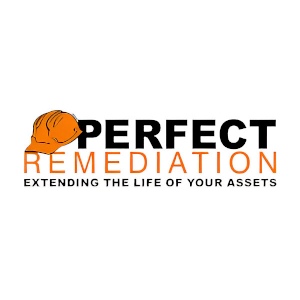


Concrete spalling signals hidden decay — expert remediation prevents safety risks and costly failures.
Concrete spalling might look like a minor cosmetic flaw — a few chips here, some flaking there. But in reality, it’s a red flag for a much deeper, more dangerous issue: concrete cancer. Left untreated, this progressive decay doesn’t just ruin aesthetics — it compromises structural integrity, triggers safety hazards, and can lead to six-figure emergency repairs.
At Perfect Remediation, we’ve seen too many asset owners delay action, only to face costly rebuilds, regulatory fines, or even partial closures. The good news? Spalling is preventable — and treatable — when addressed early by true specialists. If you manage commercial property, public infrastructure, or industrial facilities in Australia, start by exploring our comprehensive concrete repair and remediation services .
Spalling occurs when the surface layer of concrete cracks, flakes, or pops off. It’s not random wear — it’s a symptom of internal decay. The root cause is almost always corroding steel reinforcement embedded within the concrete.
Here’s the science behind it:
Moisture and chlorides — common in coastal NSW due to sea spray and de-icing salts — penetrate the concrete cover over time. Once they reach the steel rebar, they trigger oxidation (rust). Rust occupies up to seven times the original volume of the steel, creating immense internal pressure. This pressure fractures the surrounding concrete from the inside out, causing it to delaminate, crack, and eventually spall.
By the time you see visible damage — rust stains, bulging surfaces, or flaking edges — the corrosion is already advanced. The structural capacity of the element may be significantly reduced, even if the building still “looks fine.”
Many property managers and facility owners assume spalling is “just surface wear” and opt for quick cosmetic fixes like render, paint, or sealant. But this approach is not only ineffective — it’s dangerous.
Ignoring spalling leads to compounding consequences:
Worse still, surface-level “repairs” like sealants trap moisture inside the concrete, creating a pressure cooker effect that accelerates corrosion. What starts as a small patch of spalling can become a full structural crisis within 12–24 months.
True remediation isn’t about covering up — it’s about curing the disease at its source. At Perfect Remediation, we follow a five-step engineered process that has been refined across hundreds of projects nationwide:
Advanced Diagnosis
We use half-cell potential mapping, cover meters, and visual inspection to pinpoint the exact location and severity of active corrosion — often revealing damage far beyond what’s visible.
Controlled Concrete Removal
All delaminated, chloride-contaminated, and unsound concrete is carefully removed using hydrodemolition or mechanical chipping — minimizing vibration and dust, especially in live environments.
Rebar Treatment
Exposed steel is cleaned, treated with rust converters, and coated with epoxy to prevent future corrosion. Severely degraded sections are replaced or reinforced.
High-Performance Reinstatement
We use polymer-modified, low-shrink grout or shotcrete that bonds seamlessly with the original structure and outperforms it in durability and longevity.
Breathable Protective Sealing
Final surfaces are sealed with water-repellent, vapor-permeable membranes that protect against future moisture ingress without trapping internal humidity.
This isn’t guesswork. It’s precision engineering — and it’s the only method proven to add 20–50 years to an asset’s service life.
In Kingsford, a residential balcony showed severe spalling and structural weakness. Instead of full demolition, we used carbon fibre strengthening to restore load capacity — saving the owner over $120,000 in rebuild costs.
At the HJ Daley Library in Campbelltown, decades of weather exposure had caused widespread concrete decay. We removed damaged sections, treated rebar, and reinstated with heritage-compatible materials — all while the library remained fully operational and open to the public.
In Artarmon, early intervention on a commercial office building prevented a projected $500,000+ emergency rebuild. Our team identified corrosion in its early stages, treated it comprehensively, and implemented a long-term monitoring plan.
These aren’t hypotheticals — they’re proof that proactive remediation saves money, time, and lives.
Concrete spalling often hides more than rust. Older structures may contain asbestos, lead paint, or unstable voids. Work near live utilities, public zones, or multi-story buildings demands rigorous safety protocols.
That’s why our team holds an Unrestricted Demolition Licence and Class A Friable Asbestos Removal Licence — among the highest certifications in NSW. We maintain a zero-incident safety record on major projects, backed by dedicated safety personnel, ISO 9001 (Quality), ISO 14001 (Environmental), and ISO 45001 (Safety) certifications.
We don’t subcontract critical work. Every technician, engineer, and project manager is trained in-house — ensuring consistency, accountability, and compliance.
Unlike demolition and new build — which generate massive waste — remediation is inherently sustainable. We preserve embodied energy, reduce landfill, and minimize carbon footprint.
As part of Perfect Group, we control the entire chain: from material segregation to low-impact methodologies. In 2024, we achieved a 95%+ recycling rate on an industrial demolition project — setting a new industry benchmark. We use low-VOC, locally sourced materials and energy-efficient techniques to reduce our environmental impact at every stage.
Concrete spalling won’t heal itself. But with expert intervention, it can be stopped — permanently.
If you’ve noticed flaking, rust stains, or cracking on your concrete structures, act now. Early diagnosis and engineered remediation can prevent catastrophic failure, avoid regulatory penalties, and extend your asset’s life by decades.
👉 Contact us today for a no-obligation site assessment. We respond fast, diagnose accurately, and fix for good.
Because at Perfect Remediation, we don’t just repair concrete.
We restore what matters.
